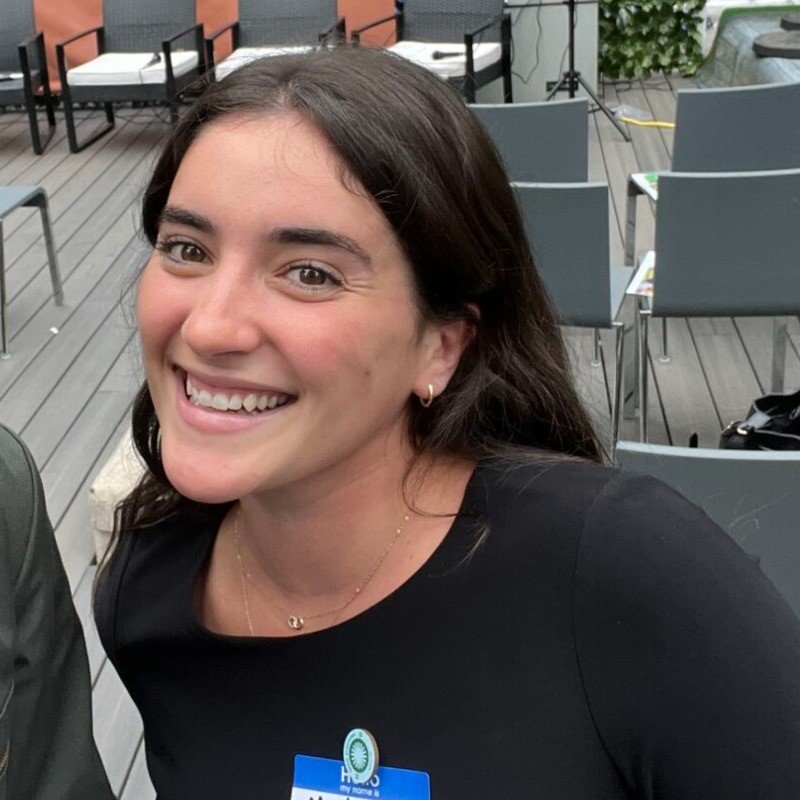
Activate New York
Join an innovation ecosystem leading on climate tech and clean energy
Turn your innovation into impact. Join the Activate New York Community of entrepreneurial scientists and spend two years translating your groundbreaking research into new products and businesses that can address society’s most urgent needs. The New York State Energy Research and Development Authority’s (NYSERDA’s) support will fund fellows developing carbontech innovations—solutions that can enable capture, storage, and utilization of carbon. Fellows in the Activate New York Community support New York State’s climate and clean energy goals to reduce carbon emissions by 85 percent and achieve carbon neutrality by 2050. By joining this innovation ecosystem, you can help accelerate decarbonization across our target verticals.
ACTIVATE NEW YORK—BENEFITS AT A GLANCE
Join a community of climate-tech and hard-tech innovation leaders
A yearly living stipend up to $100K plus a health insurance stipend and travel allowance.
$100K in research funding and access to at least $75K in additional flexible capital.
Mentorship and support from a dedicated fellowship team.
A community of peers who will meet regularly during rigorous cohort-specific and national online programming.
A program of intensive entrepreneurial training.
Multiple in-person meetings with the Activate New York team, other fellows, and the full Activate community.
Networking with Activate’s expansive community across sectors.
New York’s innovation ecosystem paired with Activate’s support
Activate’s experience supporting nearly 250 Activate Fellows since 2015 has strengthened our conviction that guiding science entrepreneurs from a strong idea to a marketable product—the zero-to-one journey—requires a high level of support and resources. New York is home to a vibrant and growing innovation ecosystem, bolstered by excellent research and development infrastructure and a state government committed to leading the country in carbon-tech.
With support from a coalition of organizations, including NYSERDA, the Grantham Environmental Trust, Additional Ventures, and the Chan Zuckerberg Initiative, we identify, fund, and support fellows who are developing new processes and products in the following technology areas:
Carbon Dioxide Removal (CDR): Carbon removal technologies, including but not limited to direct air or ocean capture, biomass energy with carbon capture and storage, and mineralization, aim to address legacy emissions to facilitate gigaton-scale carbon removal. Together, Activate and Frontier are building a key milestone for any startup—landing a first customer. Frontier will offer up to five fellows, whose technology meets its target criteria and addresses one of its RFP areas of interest, a $100K prepurchase agreement. With these contracts, fellows will reduce market risk so their focus can remain on technology development and accelerating toward commercialization.
Point-Source Carbon Capture: Point-source capture technologies focus on collecting emissions associated with infrastructure that are expected to persist over a long period of time, including fossil-fuel based power generation and CO2-emitting industrial sectors like cement and steel.
Carbon-Dioxide Conversion: Carbon conversion recycles CO2 into value-added products such as CO2-based building materials, fuels, and chemicals, in an effort to develop the industries of the future. There are a variety of approaches, including mineral carbonation, catalytic conversion, and biological approaches. Methane capture and conversion applications will also be considered.
Carbon Storage: Carbon storage innovation is critical to enable effective and permanent point-source capture and removal. New approaches are needed to develop the infrastructure for reliable carbon storage and foster the research, development and demonstration to improve performance and reduce cost.
Measurement, reporting, and verification (MRV): Measuring carbon removal accurately in the field is critical to unlocking the carbon removal markets. New approaches and sensor systems that can be deployed at scale to monitor the carbon captured and removed are needed.
Latest Activate New York news
Activate New York partners
Activate was awarded $9.15M as part of the $19.5M Carbontech Development Initiative, administered by NYSERDA. Through this support, New York will attract climate-tech leaders and build a global carbon-to-value innovation ecosystem.
Fellows at Activate New York will benefit from our host laboratory partners at Columbia University, which has a strong culture of interdisciplinary, cross-cutting research supporting applied science. Columbia is a global leader in carbontech research, having developed expertise in CO2 capture, CO2 conversion to products, and related fields, including low-carbon hydrogen, systems engineering, and electrochemical energy storage. Columbia researchers started developing carbon dioxide removal technology, including direct air capture and carbon mineralization, 20 years ago.
Columbia University is a vital partner in launching Activate New York, hosting fellows in research labs, and providing a base for Activate New York. Columbia also supports external climate tech research through the Columbia Startup Fellows (CSF) Program, which enables early-stage startups to access Columbia research facilities and specialized equipment. The CSF Program will host Activate Fellows, allowing them to leverage Columbia’s laboratories with state-of-the-art spectroscopic tools and analytical instruments. In addition to Activate’s educational resources and mentorship, Activate Fellows in New York will benefit from Columbia’s Lab-to-Market (L2M) accelerator training and mentoring programs and the Columbia Technology Ventures Executives-in-Residence Network.
Visit our FAQs to learn more about the fellowship and the Activate New York Community.
Carbon management supporters
Activate relies on a range of support for the fellowship, and is grateful for a coalition of organizations, including NYSERDA, the Grantham Environmental Trust, Additional Ventures, and the Chan Zuckerberg Initiative, that made it possible to launch the Carbon Management Imperative. Carbon 180 and Frontier have also played key partnership roles in developing our Carbon Management Imperative.
Although not required, most fellows pursuing the Carbon Management Imperative are New York-based and have access to a number of local resources described on this page.
Dive deeper into CDR
Eliminating carbon emissions is a vital step in confronting climate change, but it's not enough. To avoid catastrophic climate change by mid-century, we must explore, test, and deploy carbon dioxide removal technologies at scale.
According to the latest IPCC report, all pathways to limiting warming to 1.5 degree Celsius by mid-century require effective and scalable carbon dioxide removal technologies in tandem with emission reductions efforts. That’s why Activate is partnering with a coalition of climate leaders to identify, fund, and support fellows working on groundbreaking ways to remove CO2 from the atmosphere—faster and with more impact than advances made to date.
CDR technologies remove CO2 from the atmosphere and durably store it in geological, terrestrial, or ocean reservoirs. CDR includes enhancement of biological or geochemical sinks and direct air capture (DAC) and storage. CDR excludes natural CO2 uptake, such as through forests or ocean absorption, that would happen without human intervention. Unlike carbon capture technology, which collects carbon at point sources such as smoke stacks, CDR targets and removes CO2 from non-point, diluted CO2 that is already in the atmosphere.
Carbon Management Imperatives
If we cut emissions aggressively, why would we need to remove more carbon dioxide?
According to the latest IPCC report, all pathways to limiting warming to 1.5 degree Celsius by mid-century require effective and scalable carbon dioxide removal technologies in tandem with emission reductions efforts. That’s why Activate is partnering with a coalition of climate leaders to identify, fund, and support fellows working on groundbreaking ways to remove CO2 from the atmosphere—faster and with more impact than advances made to date.
We don't just need CDR technology, we need viable paths to market for CDR. How will Activate help me on that front?
Policy change will be a necessary ingredient for the success of emerging CDR technologies. Through our partnership with Carbon180, fellows have opportunities to engage directly with lawmakers and advocate for new initiatives that will benefit the growth of their businesses.
What does permanence mean?
Permanence, also called durability, refers to the amount of time that CO2 can be stored in a stable and safe manner, via a given CDR technology. As described in the CDR Primer: Storage duration can differ significantly, depending on the type of reservoir. For example, concentrated CO2 stored in geologic formations deep underground is effectively permanent (thousands of years), whereas forest carbon stocks can release carbon back into the atmosphere due to wildfire or tree harvesting.
What is Frontier’s target criteria for CDR prepurchase agreements?
To be eligible for a Frontier prepurchase agreement a fellow’s CDR solution must meet these target criteria.
Our location
NEW YORK, NY
276 5th Ave #906
New York, NY
10001
















